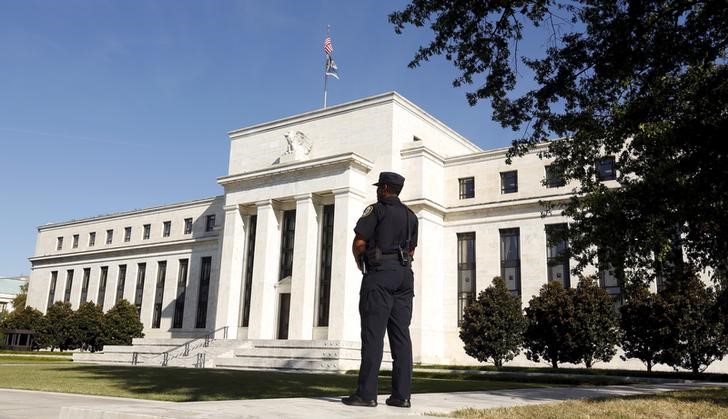Investing.com’s stocks of the week
Investing.com - A "majority" of Federal Reserve policymakers were adamant that the central bank should continue to keep monetary policy tightening on hold for the remainder of the year amid timid inflation and slowing global growth, minutes of the most recent FOMC meeting published Wednesday showed.
The Fed kept its benchmark rate to a range of 2.25% to 2.5% at the conclusion of its two-day policy meeting on March 20.
"(A) majority of participants expected that the evolution of the economic outlook and risks to the outlook would likely warrant leaving the target range unchanged for the remainder of the year," the minutes showed.
At the March meeting of the Federal Open Market Committee, the Federal Reserve reined in its outlook on rate hikes, suggesting no rate hikes for this year, down from its initial guidance of two hikes, and said it would halt its efforts to shrink its balance sheet in September. The FOMC is the Fed's rate-making body.
On the economy, Fed staff forecast that U.S. real GDP growth would slow "markedly" in the first quarter, reflecting a "softening in growth of both consumer spending and business investment," the minutes said. But while economic activity is expected to bounce back in the second quarter, participants "generally expected the growth rate of real GDP this year to step down from the pace seen over 2018."
But there are some participants who believe a rate hike would be appropriate this year, should economic growth run above its longer-run trend rate, according to the minutes. Still, the overarching message from the central bank on monetary policy appears to be one of patience.
"In light of global economic and financial developments and muted inflation pressures, members concurred that the Committee could be patient as it determined what future adjustments to the target range for the federal funds rate may be appropriate to support those outcomes."
The minutes also suggested that there could be less room for hikes beyond 2019, with several participants noting the Fed's current benchmark rate was close to their estimates of the neutral level - one that neither overstimulates growth, nor inhibits it.
The minutes come just weeks after the U.S. Treasury yield curve inverted, with shorter-term yields rising above longer-term yields. That raised fears that a recession was on the horizon. But the Fed downplayed those fears somewhat, arguing that the "low level of term premiums in longer-term interest rates made historical relationships a less reliable basis for assessing the implications of the recent behavior of the yield curve."
With global growth on the ropes and domestic inflation still shy of the central bank's target, many, including President Donald Trump, have called on the central bank to cut rates.
"The Fed should drop rates," Trump told reporters on Friday. "They really slowed us down. There’s no inflation."
But the minutes showed Fed members, for the moment at least, remain on the fence when it comes to either cutting or increasing rates, opting to assess incoming data to get a clearer picture of the health of the economy.
"Several participants noted that their views of the appropriate target range for the federal funds rate could shift in either direction based on incoming data and other developments," the minutes showed.
